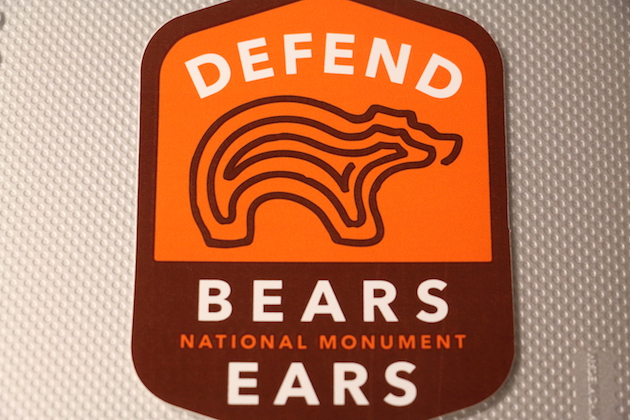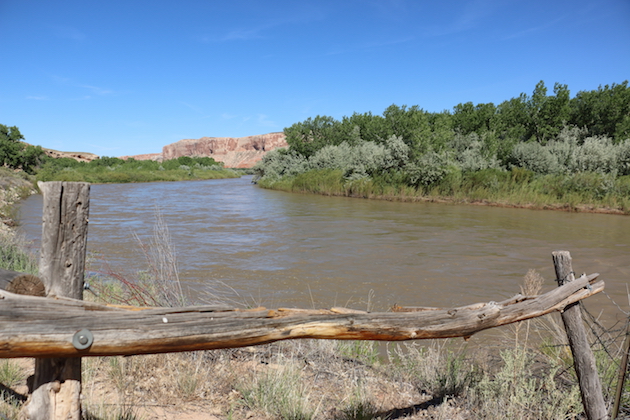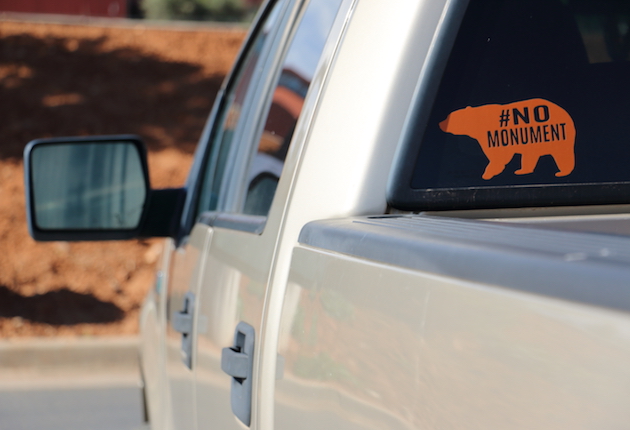There’s a difference between fit and fit for the backcountry. That difference is painfully obvious as I help haul a mountain biker with a broken wrist out of the remote, red-rock country known as Bear Ears National Monument. The temperature is high, and I’m low on water. I’m also covered in bug bites, and my skin is more than kissed by the sun. Even my vocal chords are struggling in the high and dry desert air, but I’m still intrigued by the place that breaks many.
“It’s still the frontier out here, and no one knew about it. That’s what made it so special,” says Dustin Randall, Roam Industry owner and outfitter. “Now more people know. More people show up. More regulation comes.”
Bears Ears is in rough-beyond-the-edges southern Utah, and it’s one of the nation’s newest and most controversial monuments. Neighboring town Blanding sports anti-monument stickers. Another nearby town, Bluff, displays pro-monument decals. And while the rest of the country argues over the protection of the monument’s 1.3 million acres, those closest to the land continue to hunt, fish, hike, bike, and live in a place not created for the weak of limb.

Twenty-six miles from Blanding in Bluff, Utah, stickers defending Bears Ears contradict anti-monument sentiment.
“We love this place. We like the fact that we live out in the middle of nowhere. We like that nobody is here,” says Chris Giangreco, Canyon Country Discovery Center executive director. “There is a concern about people knowing where we are.”
Growing up in Salt Lake City, I almost knew where they were. I spring breaked in Utah’s Escalante before it was a national monument with Grand Staircase, but I didn’t know of Bears Ears until 2016. Neither did Lew Carpenter, a sportsman from Colorado who hunted turkey in Bears Ears the week before I arrived. The keen birds outsmarted him, the Native Americans visited with him, and the land enchanted him.
“I can’t think of another piece of the American landscape that has had such an immediate and significant impact on my perspective of public lands,” says Carpenter, National Wildlife Federation regional representative. “The turkeys didn’t cooperate with me, but I’ll be back to this slice of paradise for years to come.”
I came across the turkeys Carpenter missed as I prepared to raft the San Juan River. It’s the sand-saturated waterway that bleeds into the Colorado River and forms the southern border between the monument and the Navajo Indian Reservation. An estimated 100,000 ancient writings and ruins from several tribes spill well past reservation boundaries into Bears Ears. It’s these relics, now looted and blasted with bullet holes, putting the place on protection radar.
“The real reason behind this monument has nothing to do with sport,” says Luke Nelson, fly fisher and trail runner. “You can’t go around a corner without running into something awesome, whether it’s rock art or a dwelling, and that is why it needs protection.”

The San Juan River creates the southern boundary of Bears Ears National Monument where it meets the Navajo Indian Reservation in southern Utah.
A local hunter displays his own kind of protection as he passes us while we’re hauling out the injured mountain biker. He’s trucking six dogs down the dirt road; we’re climbing up, and his side mirror squeezes uncomfortably close to my handlebars. His hounds are high on scent and he’s on high alert; he’s trailing bear and we’re in his way.
But there’s more to it than that. He’s a local and we’re outsiders. We don’t know the land like he does, yet we are using it. That’s tough for some people.
As a Westerner, I feel the same way about the out-of-state campers holding a three-day spiritual fast deep in the canyon. We pass their parked cars on our way to a rural hospital outside of Bears to have the biker’s broken bone set. Fasters? Only city folk would dare venture way out here seeking some religious revelation without food. I’m prepared for anything in the wild; they’re prepared for nothing.
Sounds ridiculous inside a landscape that shows no mercy for sportsmen or spiritualists. No mercy for rafters and ranchers, either, yet they’re all here in numbers never seen before. No doubt the battle over Bears Ears is turning this land of many uses into a land of more users. It’s no wonder the locals are leery.
“It’s all public land. I understand it belongs to everybody,” says Randall. “Everybody else in the country loves the idea of it, but they haven’t been on the ground itself to love it.”
Or leave it when it proves too much for those not fit for the backcountry.
Kris Millgate is an outdoor journalist based in Idaho Falls, Idaho. See more of her work at tightlinemedia.com.

